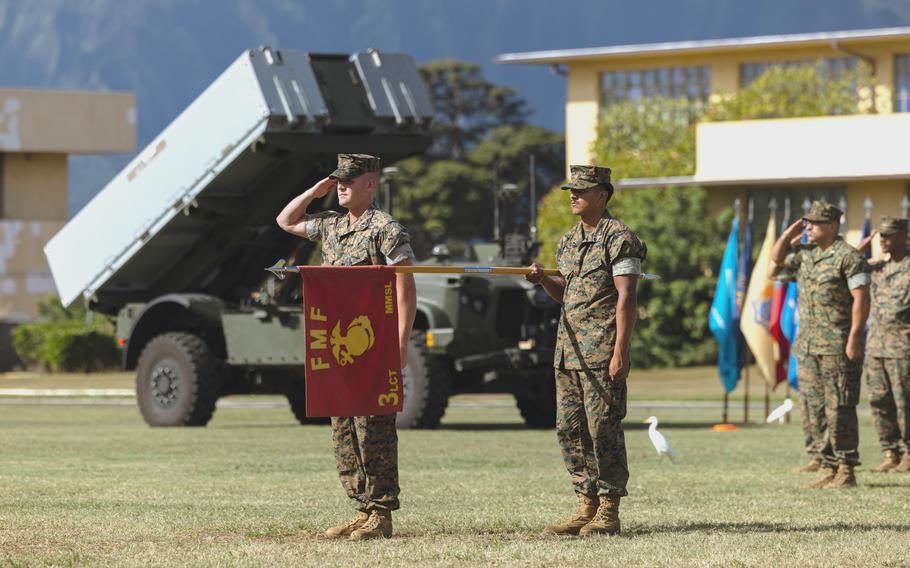
The 3rd Marine Littoral Regiment with the Navy-Marine Expeditionary Ship Interdiction System at Marine Corps Base Hawaii on Nov. 26, 2024. (Jacqueline Parsons/U.S. Marine Corps)
The U.S. Marine Corps plans to deploy its new Navy-Marine Expeditionary Ship Interdiction System to the Philippines for the first time during this month’s Balikatan exercise, Defense Secretary Pete Hegseth said on his recent stop in Manila.
Hegeseth, who completed an Indo-Pacific tour of Guam, Japan and the Philippines on Sunday, announced the NMESIS deployment at a press conference Friday with Philippine Secretary of National Defense Gilberto Teodoro.
“We agreed that the United States will deploy additional advanced capabilities to the Philippines,” Hegseth said, according to a transcript on the Department of Defense website.
“This includes using the NMESIS anti-ship missile system and highly capable unmanned surface vehicles in exercise Balikatan,” he said.
The annual exercise — Balikatan is Tagalog for “shoulder to shoulder” — is scheduled to run from April 21 to May 9. The U.S. is sending 10,000 U.S. troops to participate alongside 6,000 service members from the Philippines, Australia and Japan.
The deployment of NMESIS and unmanned surface vehicles will “hasten the introduction of the technologies” to the Philippine military, Teodoro said in the DOD transcript, which didn’t specify the type of unmanned vessels.
A Marine Corps video released in February shows the 3rd Marine Littoral Regiment at Marine Corps Base Hawaii training with NMESIS ahead of Balikatan. The system arrived at the base in November, according to a news release by the regiment that month.
The system allows the unit to “make greater contributions to a naval campaign,” 3rd Littoral Combat Team commander Lt. Col. Timothy Love said in the Nov. 26 release. “In addition to rifle companies capable of seizing and defending key maritime terrain, 3d LCT’s missile battery is now armed with mobile precision fires systems to support sea denial operations.”
NMESIS is a key piece of hardware for littoral regiments, formed as part of the Marines’ Force Design plan to deploy small units onto the Pacific’s first island chain to take shots at Chinese warships in a conflict.
The NMESIS system consists of antiship Naval Strike Missiles mounted on Joint Light Tactical Vehicles. The missile alone costs $2.194 million, according to a Naval News report in November 2022.
A former Marine general has reservations about the missiles’ limited reach.
Its 115-mile range is inferior to the other services’ anti-ship missiles, retired Marine Brig. Gen. Jerry McAbee, a former artillery officer, said by email Monday to Stars and Stripes.
“It will contribute little to nothing if the Chinese invade Taiwan or anywhere else in the Indo-Pacific,” he said.
The Army’s Typhon missile system, positioned in the Philippines since spring 2024, has a range of more than 1,000 miles, said retired Marine Col. Grant Newsham, a senior researcher with the Japan Forum for Strategic Studies.
“The Chinese are very unhappy with the Typhon,” he said in an email Monday. He questioned why the Marines have not acquired the Army’s system.
Despite its relatively short range, NMESIS could cause a lot of trouble for an enemy force in the Western Pacific, Newsham said.
The missiles could be effective in the Strait of Malacca, between Indonesia and Malaysia, or the Bashi Channel, which separates the Philippines from Taiwan, he said.
“The Philippine geography also has a lot of tight maritime terrain, so there’s plenty of places to deploy these missiles usefully - and provide coverage,” he said.